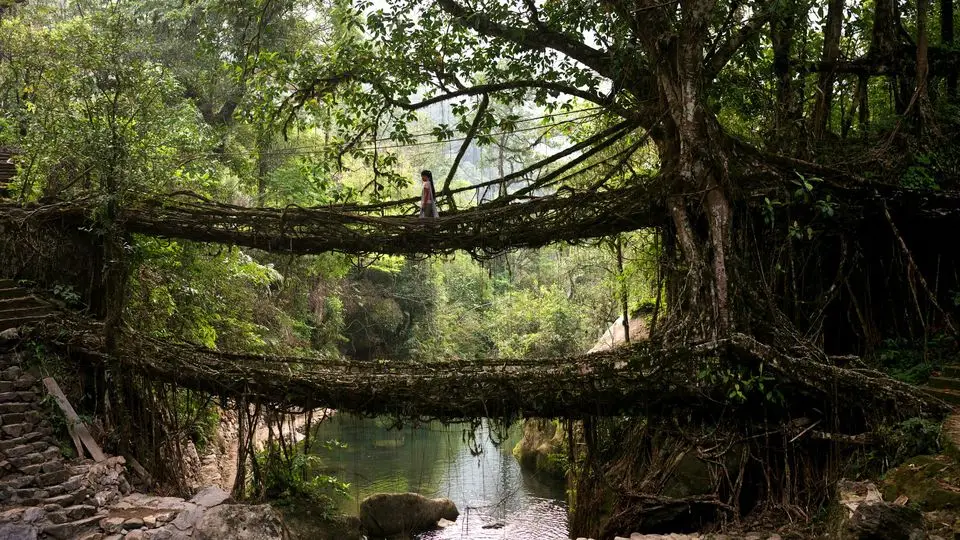
Sep 29, 2022
We have been able to enjoy the royalty of nature that our forefathers left for us. They understood, realised, learnt and implemented sustainable means of living to ensure that the resources do not deplete and there is enough for everyone. With urbanization, came progress that promoted faster and easier means of growth, as a result of which, sustainable practices started to suffer.
A perfect example of traditional means practiced by the indigenous communities of India are the living root bridges of Meghalaya - an ingenious solution drawn from nature for crossing the rain-swollen rivers of monsoon. The locals created these 'living' bridges with the sturdy roots of rubber fig trees.
These trees have a secondary root system, otherwise known as aerial roots, originating high up from the trunk. These secondary roots were guided by the locals through a system of scooping-out betel nut tree trunks to the opposite bank.
Over a period of nearly two decades, these roots became functional and formed secure bridges that could support the weight of over fifty people at a time.
Being constructed of materials offered by nature and following sustainable techniques, they never caused any structural damage to the surroundings.